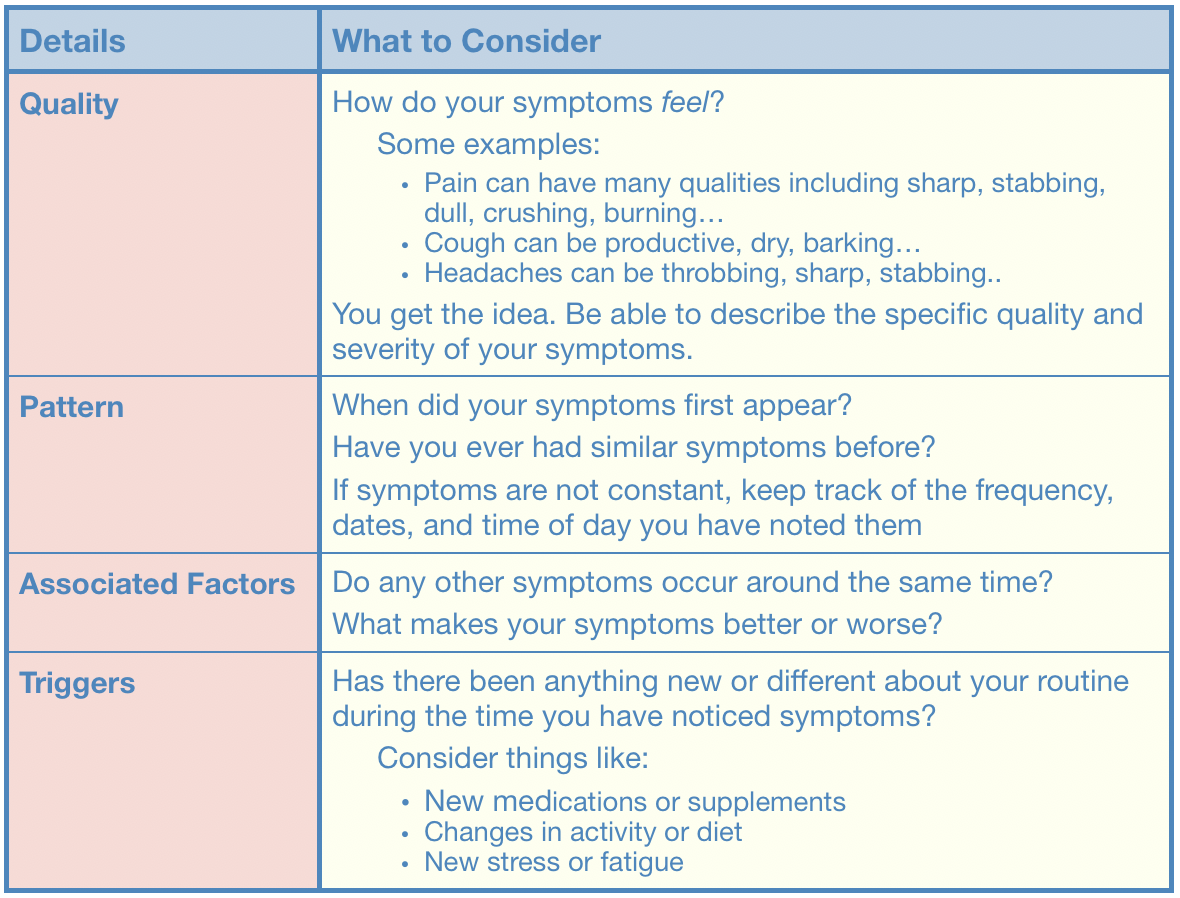Want Better Health Outcomes? Start Here.
What’s one simple thing you can do right now to improve the accuracy of your medical diagnoses and optimize your health?
Here’s a hint: it’s free, takes less than 10 minutes a week, and could completely change the way you and your doctor understand what’s going on in your body.
The answer?
Start tracking your symptoms.
I’ve shared a checklist before on how to get the most out of your medical visits—but one of the most powerful tools on that list is this: a clear, consistent symptom tracker.
Why Symptom Tracking Matters
Your healthcare team wants to help you feel better—but they can only work with the information they have. That’s why it’s so important to spend a little time before appointments thinking about your symptoms. When do they happen? How long do they last? What seems to make them better or worse?
A symptom tracker helps you walk into every appointment with clarity, and it gives your provider what they need to offer:
More accurate diagnoses
More relevant testing
More effective, personalized treatment
“Is it Really Worth the Effort?”
With vs. Without a Symptom Tracker: A Real-Life Scenario
Let’s say you’ve been feeling some vague stomach discomfort over the past few months, but you’ve been busy and haven’t paid it much attention.
You bring it up during your annual check-up, but you can’t really describe it. No pattern, no specifics. Naturally, your provider becomes concerned—because when they don’t have clear clues, they have to start with the most serious possible causes. They order a battery of tests to rule out dangerous conditions. You spend time and money on the testing, and while the results are mostly reassuring, they don’t give you a clear answer. You’re left feeling confused and still uncomfortable.
Now let’s rewind and try it again—with a symptom tracker.
This time, you’ve spent a few weeks jotting down what you notice. You tell your provider: “It’s cramping and indigestion, usually around 10 a.m. every day. It goes away by mid-afternoon. Nothing I eat seems to change it.”
Now your provider asks a smarter question: “Tell me about your morning routine.”
You mention the light breakfast you have at 8 a.m. and a new supplement you started taking—one your neighbor recommended for joint pain.
Your provider connects the dots: that supplement is known to irritate the stomach. You stop taking it for a few days—and just like that, your symptoms disappear.
Sound silly? It’s not. I see stories like this all the time. The difference between months of frustration and a simple answer often comes down to the quality of information you’re able to share.
Symptom Tracking Tips - Download CaringBee’s symptom tracker to help you get the answers you need.
Why It’s So Hard to Get the Right Diagnosis—And How You Can Help
Here’s the truth: when your provider doesn’t have clear details to work with, they’re forced to start with a huge list of possible causes. That’s when the “shotgun” approach begins—testing for everything and hoping something sticks.
But every meaningful detail you provide helps narrow the list. Symptom tracking gives your provider a head start—and gives you a better shot at getting the answers you need, faster and with less stress!
Bottom Line: You Are the Expert on Your Body
Your provider brings medical training and diagnostic tools. You bring lived experience and day-to-day insight. When you use a symptom tracker, you bridge the gap—and become a more powerful advocate for your own care.
Don’t wait until your next visit to start. Download CaringBee’s symptom tracker, grab a notebook, or use your Notes app. Just start noticing—and writing it down.
You’ve got this. And if you need help knowing what to track or how to share it, I’m here for that too.


